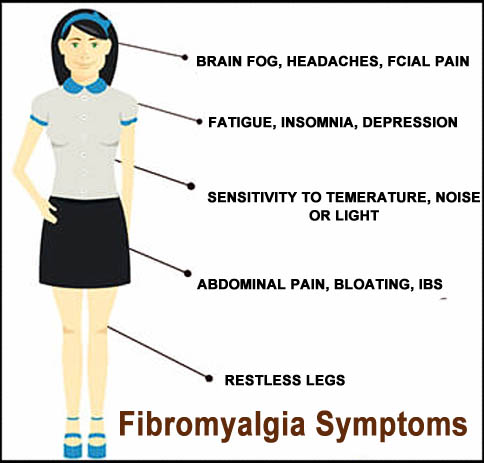The Facts about Fibromyalgia, While the millions living with fibromyalgia are acutely aware of this multi-symptom syndrome, many others—including some physicians—are wholly unfamiliar with this complicated, somewhat mysterious condition.
Brief History, Broad Spectrum of Symptoms
This lack of familiarity can be traced to several factors. First, fibromyalgia only entered the medical lexicon relatively recently. “When I was a fellow 18 years ago, many physicians had never heard of fibromyalgia,” explains Daniel Arkfeld, M.D., associate professor of clinical medicine at the Keck School of Medicine of USC.
Another lack-of-familiarity factor can be attributed to, as Arkfeld puts it, the fact that “fibromyalgia isn’t neatly packaged.” Arkfeld is referring to fibromyalgia’s seeming smorgasbord of symptoms. According to the National Fibromyalgia Association (NFA), “Chronic, widespread body pain is the primary symptom of fibromyalgia. Most people with fibromyalgia also experience moderate to extreme fatigue; sleep disturbances; sensitivity to touch, light and sound; and cognitive difficulties.”
Arkfeld, who has worked with thousands of fibromyalgia patients, says, “The most prevalent symptoms are pain and fatigue. Depression also is a very common symptom.”
Further, many fibromyalgia suffers also experience a variety of other symptoms, including: irritable bowel and bladder; migraine headaches; impaired memory; skin rashes; dry eyes and mouth; anxiety; depression; ringing in the ears; dizziness; vision problems; and impaired coordination. Those with fibromyalgia often face additional, simultaneous medical challenges such as arthritis, chronic fatigue syndrome, lupus, restless leg syndrome and sleep apnea.
Women suffer disproportionately from fibromyalgia. Based on NFA statistics, between 75 percent and 90 percent of those with fibromyalgia are women. Arkfeld attributes this gender gap to female hormones. Most fibromyalgia patients are diagnosed between the ages of 20 to 50.
Diagnosing Fibromyalgia
Not surprisingly, fibromyalgia’s expansive spectrum of symptoms often stands as an obstacle to both diagnosis and treatment. Arkfeld points out, “By the time patients come to my office, they usually have been to 20 other doctors who haven’t been able to help them.” The NFA estimates that, on average, it takes five years for a fibromyalgia patient to receive an accurate diagnosis.
Although fibromyalgia presents in a plethora of forms, to meet the syndrome’s diagnostic criteria patients must have widespread pain in all four quadrants of their body for a minimum of three months. Pain is considered widespread when all of the following are present:
- Pain in the left side of the body
- Pain in the right side of the body
- Ppain above the waist
- Pain below the waist
- Pain in the neck, front of the chest, mid-back or lower back.

As there currently are no laboratory tests to confirm fibromyalgia, physicians apply pressure at 18 locations on the body—based on American College of Rheumatology guidelines—to determine the existence of tender points. Fibromyalgia is diagnosed when tenderness or pain is found in at least 11 of the 18 specified locations. Doctors also take into account a patient’s medical history and self-reported symptoms.
Treating Fibromyalgia
Given the multi-faceted nature of fibromyalgia, treatment doesn’t come in a one-size-fits-all form. As Arkfeld observes, “There’s no single treatment pathway, as patients present with a variety of symptoms.”
For those requiring pain management, there are three FDA-approved prescription medications— pregabalin (Lyrica), duloxetine (Cymbalta), and milnacipran (Savella). Localized areas of pain also can be addressed through lidocaine injections.
Sleep disturbances commonly associated with fibromyalgia can be countered by prescription sleep medications or low-dosage antidepressants; patients experiencing depression might receive higher-dosage antidepressants. Lifestyle modification—such as avoiding caffeine, sugar and alcohol before bed—also can prove beneficial.
Arkfeld additionally advocates exercise. “Medication is one pathway,” he explains, “but exercise is an important part of treatment as well. Fibromyalgia patients need to gradually build up their endurance. Exercise helps reduce sleep disturbances and tender points.”
The NFA gives a nod to a variety of other treatments, including: physical therapy, therapeutic massage, water therapy, light aerobics, acupuncture, yoga, aromatherapy, biofeedback and osteopathic or chiropractic manipulation.
Looking Ahead
While the underlying cause of fibromyalgia remains somewhat elusive, recent research is shedding light on likely physiological suspects. “Findings are increasingly pointing to central pain mechanisms deep in the brain,” says Arkfeld. Evidence indicates that fibromyalgia sufferers experience amplified pain due to abnormal sensory processing in the central nervous system. Looking ahead, Arkfeld is “optimistic for the future. Twenty years from now, we’ll have fibromyalgia well figured out.”
Heal with Magnetic Appeal!
From backache to detoxing, magnets are becoming popular as an alternative remedy. Just how does magnet therapy work? Sudeshna Chatterjee finds out.
CLEOPATRA is said to have slept on a Lodestone (first known magnetic mineral) to keep her skin youthful. Down the decades, Queen Elizabeth I and II, Prince William, former US president Bill Clinton, actor Anthony Hopkins, Cherie Blair (wife of British PM Tony), are all said to have benefited from magnet therapy.
Magnetic fields play an important role in medicine. For instance, they are used in magnetic resonance imaging (MRI) machines. In the last 15 years, there have been over 57 studies conducted in the USA about using magnet therapy in certain ailments like osteoarthritis and fibromyalgia.
WHAT IS MAGNET THERAPY?
West Bengal-based Dr AK Bhattacharya, homeopath and pioneer of magnet therapy in India, explains, “The earth is a huge magnet and it passes on magnetic energy to all things. The human body is composed of billions of cells, each of which is an electrical unit. These cells vibrate or oscillate at specific frequencies, picking up their frequencies from the ether. Hence, when the magnetic field of a human being is weakened by known or unknown phenomena, ailments develop in that part of the body.” Mumbai-based alternative healer Himmatbhai Mistry elaborates, “With the help of a correctly-positioned magnet close to the affected part, the yin and the yang in the body is balanced and the disease weeded out.”
HOW TO USE MAGNET THERAPY:
 Magnet therapy is easy to practise at home, though it is advisable to seek help from an expert. People fitted with pacemakers or other surgically implanted gadgets and pregnant women should avoid this therapy.
Magnet therapy is easy to practise at home, though it is advisable to seek help from an expert. People fitted with pacemakers or other surgically implanted gadgets and pregnant women should avoid this therapy.
A magnet has two poles: north and south. In alternative therapy, the north pole of a magnet is the south-seeking pole and vice versa, Mistry points out. The south-seeking pole (N pole) absorbs the body’s pains, while the north-seeking pole (S pole) gives energy, says Dr Bhattacharya. For most type of aches like toothache, backache, arthritis, rheumatism, etc, place the N pole of the magnet close to the affected part for about 20 to 40 minutes, once or twice a day, till the pain subsides, says Mistry. While chronic aches take longer to heal, patients with acute pain find relief relatively faster. For problems related to the spinal cord, the N pole of the magnet should be used along the spine for 20-40 minutes. “The magnet should be held alternately on the left side of each vertebra and then on the right, for four minutes at a time. The application should start at the top,” says Dr Bhattacharya. For insomnia and other such conditions, where one needs energy, place the S pole of the magnet on the forehead, between the eyebrows, for about 10 minutes daily over two months.
As magnets are known to expel toxins and purify blood, drinking magnet-charged water also helps. To prepare magnet-charged water, two magnets with opposite poles facing each other should be kept against a glass of water for five minutes, says Dr Bhattacharya. One can also hold two magnets with both hands (N pole in contact with the right and S pole with the left) everyday for about 15-20 minutes, for positive energy.
BUYING MAGNETS:
Magnets should be bought from reliable places, with the help of an expert. One doesn’t have to buy the biggest or most expensive magnet. What’s important is the correct positioning of the poles in accordance with the ailment, say experts.
